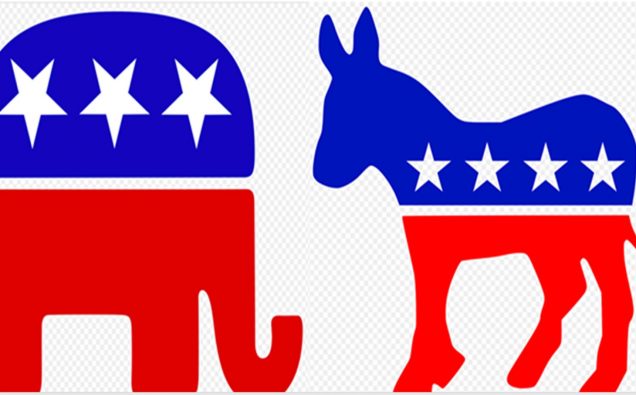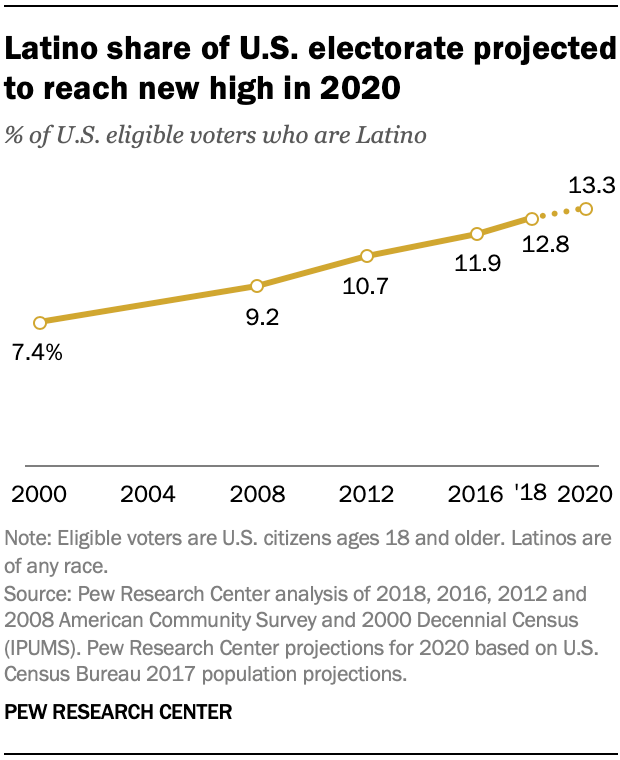
With a record 32 million voters, Latinos will be America’s largest racial or ethnic minority in a U.S. presidential election as political parties gear up for 2020 polls in a polarized environment.
For the first time Latinos will account for 13.3% of all eligible voters in the United States, Pew Research reveals.
The total population of Latinos in the United States is 60 million.
“Latino eligible voters – U.S. citizens ages 18 and older – could play a larger role in this year’s Democratic Party primary season,” a Pew Research report said.
According to the organization, 56% of Hispanic American voters live in states that will hold Democratic primaries and caucuses on or before Super Tuesday on March 3, 2020.

The Latino share of voters this year marks a jump from 29% in 2016, when Democrats lost to Republicans in an election which saw minorities and immigrants a constant target of Republican criticism.
But Latinos continue to be diverse in their political approach with 62% of registered voters identifying with or leaning toward Democrats while 34% going for the GOP.
It would be interesting to watch how Latinos vote in the 2020 election as President Trump campaigns for reelection having pursued a raft of strict immigration measures including restrictions on immigrants entering the U.S. illegally or seeking asylum.
On the other hand, Latinos are favoring different Democratic presidential candidates.
Democratic hopeful Senator Bernie Sanders, who according to The New York Times, has been securing support of American minorities, has reached out to Hispanic voters via Spanish language messaging. Sanders is also said to be winning backing of other minorities like American Muslims for his clear-cut stances on political disputes including Kashmir and Palestinian questions.
The newspaper reports that Bernie Sanders mainly owes his soaring support to African-American and Hispanic Democrats.
Former Vice President Joe Biden has taken a clear position on immigration issues but his campaign lacks the steam. Additionally, he has not been able to articular categorical positions on major foreign policy issues and conflicts – something which contrasts with the styles of other Democratic presidential contenders, who do not feel bound by imperatives of political correctness.

Percent of Hispanic and Latino population by state in 2012 Image: Ali Zifan/ Wikimedia
The Democratic primary in Iowa – which has 6 percent Mexicans – could be a barometer on who Latinos see as their preferred Democratic candidate.
So, will it be Democratic candidates or Trump’s policies that will be a major driver of political trends among Hispanic voters?
President Trump, fresh from his own string of performances including a trade deal, defeat of impeachment in the U.S. Senate, addition of more states to immigration ban and new Middle East peace plan appears to have strengthened his position in his key base of supporters.
And how will that translate into an impact on the election since Latinos are spread in many different states.
California is home to a quarter of the nation’s Latino electorate, with 7.9 million Latino eligible voters while Texas has the second biggest number with 5.6 million, followed by Florida’s 3.1 million.
However, Latinos hold much bigger influence in New Mexico with the highest 43% share of eligible voters. California (30%), Texas (30%), Arizona (24%) and Florida (20%) are the other top states.
















